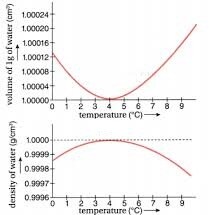Thermal Properties of Matter - Definition, Formulas, Examples, FAQs
The thermal properties of matter are the essential characteristics that govern how substances respond to changes in temperature and energy transfer. In this article, we will explore the thermal expansion of solids, liquids, and gases, specific heat capacity, modes of heat transfer, thermal conductivity, and the laws related to blackbody radiation. By examining these properties, we can gain insights into the behaviour of materials under thermal conditions. This article provides a foundational understanding that is crucial for class 11 students. Students should check the Thermal Properties of Matter class 11 notes to download the pdf containing notes.
JEE Main/NEET 2027: Physics Important Formulas for Class 10
NEET 2025: Mock Test Series | Syllabus | High Scoring Topics | PYQs
JEE Main: Study Materials | High Scoring Topics | Preparation Guide
JEE Main: Syllabus | Sample Papers | Mock Tests | PYQs
- Thermal Properties Of Matter Class 11 Important Topics (NCERT Syllabus)
- Thermal Properties Of Matter Class 11 Notes
- Thermal Properties Of Matter Important Formulas
- Thermal Properties Of Matter Applications
- Importance Of Chapter Thermal Properties Of Matter
- Summary
Thermal Properties Of Matter Class 11 Important Topics (NCERT Syllabus)
-
Heat, temperature, thermal expansion of solids
-
Thermal expansion of liquids, and gases
-
Anomalous expansion of water
-
Change of state - latent heat
-
Heat transfer-conduction, convection and radiation
-
Thermal conductivity
-
Qualitative ideas of Blackbody radiation
-
Wein's displacement Law, Stefan's law.
Thermal Properties Of Matter Class 11 Notes
1. Heat, Temperature And Thermal Expansion Of Solids
Temperature is defined as the degree of hotness or coldness of a body and its measurement is thermometry. Temperature is a fundamental quantity. It is a scalar with S.I. unit Kelvin. The temperature decides the direction of heat flow. Heat flows from a point of higher temperature to a point of lower temperature. The temperature of a body is a measure of the average translational KE of a molecule.
Scales of temperature: The SI unit of temperature is kelvin, defined as (1/273.16)th part of the thermodynamics temperature of the triple point of water. Celsius scale or centigrade is also common.
Nowadays in new thermometry triple point of water 273.16 K is taken as the reference point. The triple point of water is 0.01 on the Celsius scale and 273.16 K on the Kelvin scale.
Conversion between different scales
2. Anomalous Expansion Of Water
Generally, any material expands on heating and contracts on cooling. But in the case of water, it expands on heating if its temperature is greater than 4°C. In the range 0°C to 4°C, water contracts on heating and expands on cooling, i.e.

3. Specific Heat Capacity
4. Calorimetry
5. Change Of State - Latent Heat
6. Heat Transfer - Conduction, Convection And Radiation
7. Thermal Conductivity
8. Black Body Radiation
-
Newton’s Law Of Cooling
9. Wein’s Displacement Law And Stefan’s Law
Other Important Topics
Thermal Properties Of Matter Important Formulas
1. Heat Transfer
-
Conduction
-
Convection
-
Radiation
2. Specific Heat Capacity
-
Heat Transfer
-
Latent Heat
-
Ideal Gas Law
3. Thermal Expansion
-
Linear Expansion
-
Area Expansion
-
Volume Expansion
Thermal Properties Of Matter Applications
-
Building Insulation
-
Refrigeration and Air Conditioning
-
Heat Exchangers
-
Thermal Management in Electronics
-
Cooking Appliances
-
Phase Change Materials
-
Medical Applications
-
Astronomy and Space Exploration
NCERT Solutions Subject-wise link:
Importance Of Chapter Thermal Properties Of Matter
-
Understanding Fundamental Concepts: Understanding topics like radiation, convection, and conduction is essential for fields like environmental science, and meteorology.
-
Real-Life Applications: The concept of thermal properties of matter can be used for thermal therapy in medical applications, thermal control systems in spacecraft and thermal energy storage systems in phase change materials.
-
Material Selection: Knowing the specific heat capacity and thermal properties of materials would help us in selecting materials for manufacturing or industrial purposes.
-
Thermodynamics Foundation: This unit underlays the groundwork for advanced topics in thermodynamics.
-
Energy Conservation: Understanding the thermal properties encourages awareness of energy conservation and sustainability.
-
Problem-Solving Skills: Solving complex problems in this unit would help students to enhance problem-solving skills in advanced topics.
Summary
The unit on thermal properties of matter in Class 11 physics plays a crucial role in understanding how heat and temperature affect different materials. This principle has applications in everyday life. It covers essential concepts such as heat transfer mechanisms—conduction, convection, and radiation—along with specific heat capacity and thermal expansion. This concept has an interdisciplinary connection with fields like chemistry, environmental science, and engineering.
Frequently Asked Questions (FAQs)
The SI unit of thermal conductivity is
Temperature is defined as the degree of hotness or coldness of a body and its measurement is thermometry.
The three modes of heat transfer are convection, conduction and radiation.
The SI unit of heat is Joule (J)
Heat is transferred in gas through convection.
Also Read
19 Dec'24 02:58 PM
02 Dec'24 12:36 AM
21 Nov'24 01:48 PM
20 Nov'24 10:28 AM
18 Nov'24 05:26 PM
12 Nov'24 11:55 PM
12 Nov'24 11:20 PM
12 Nov'24 09:27 PM
25 Sep'24 06:28 PM
25 Sep'24 11:47 AM

